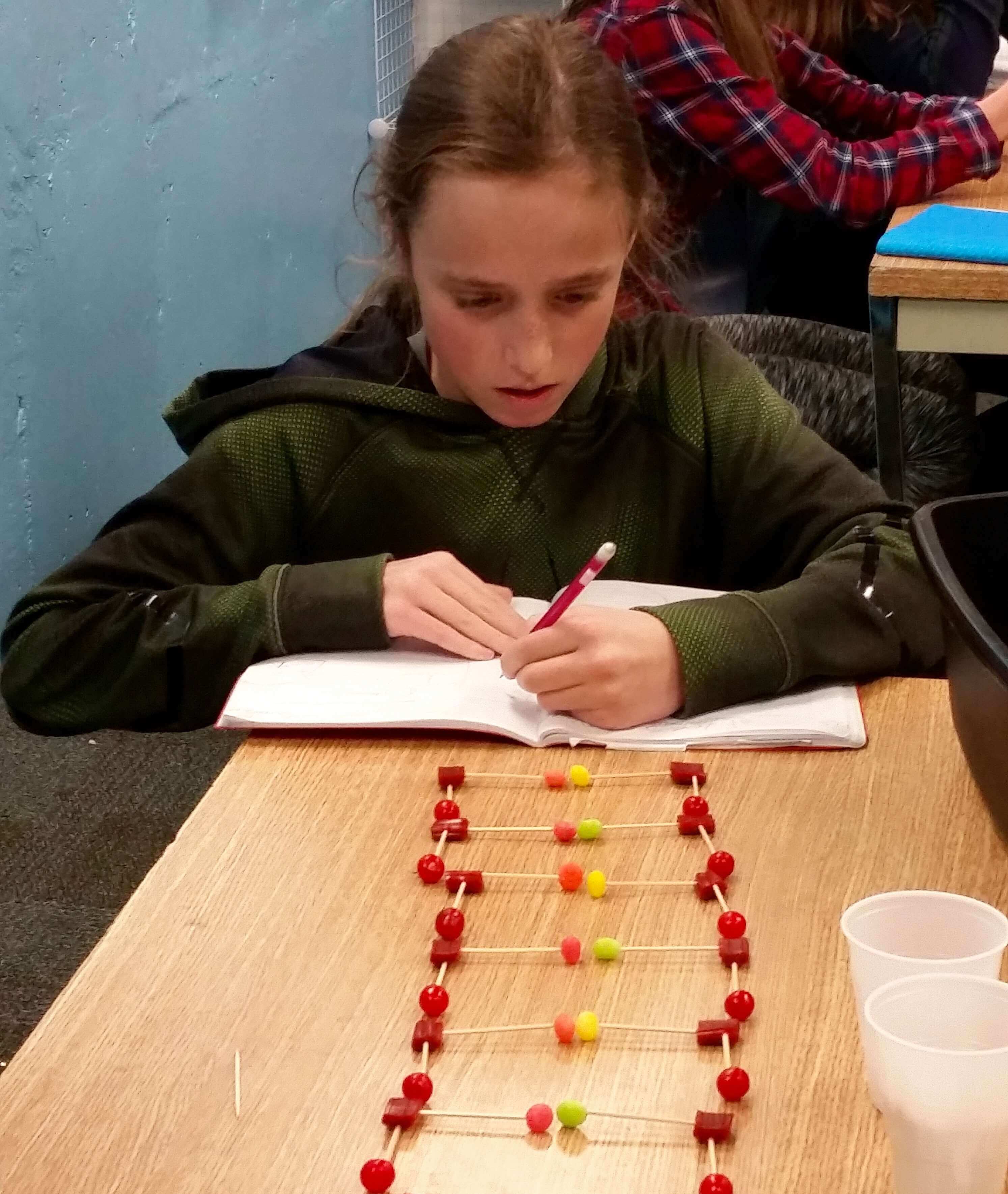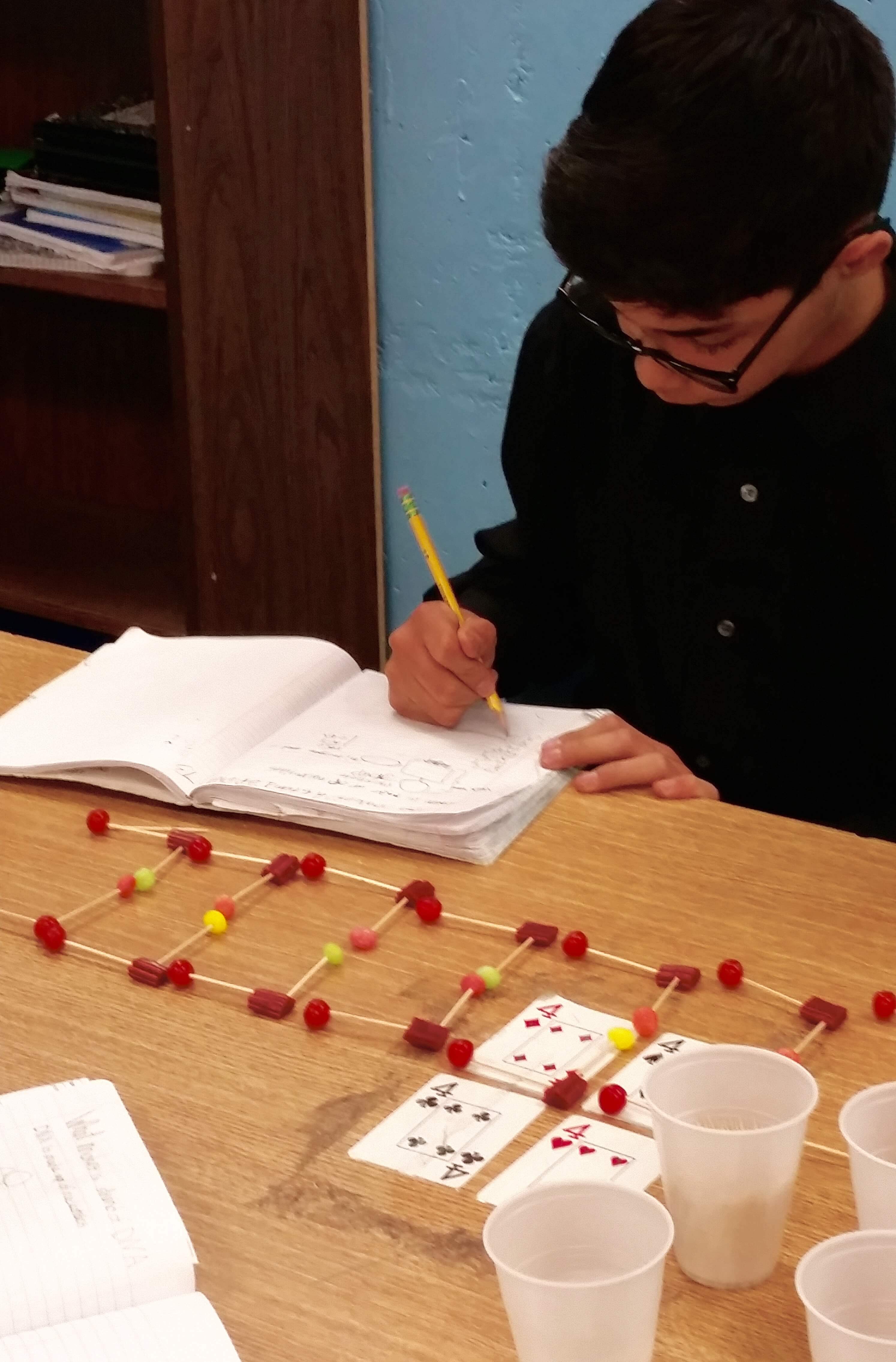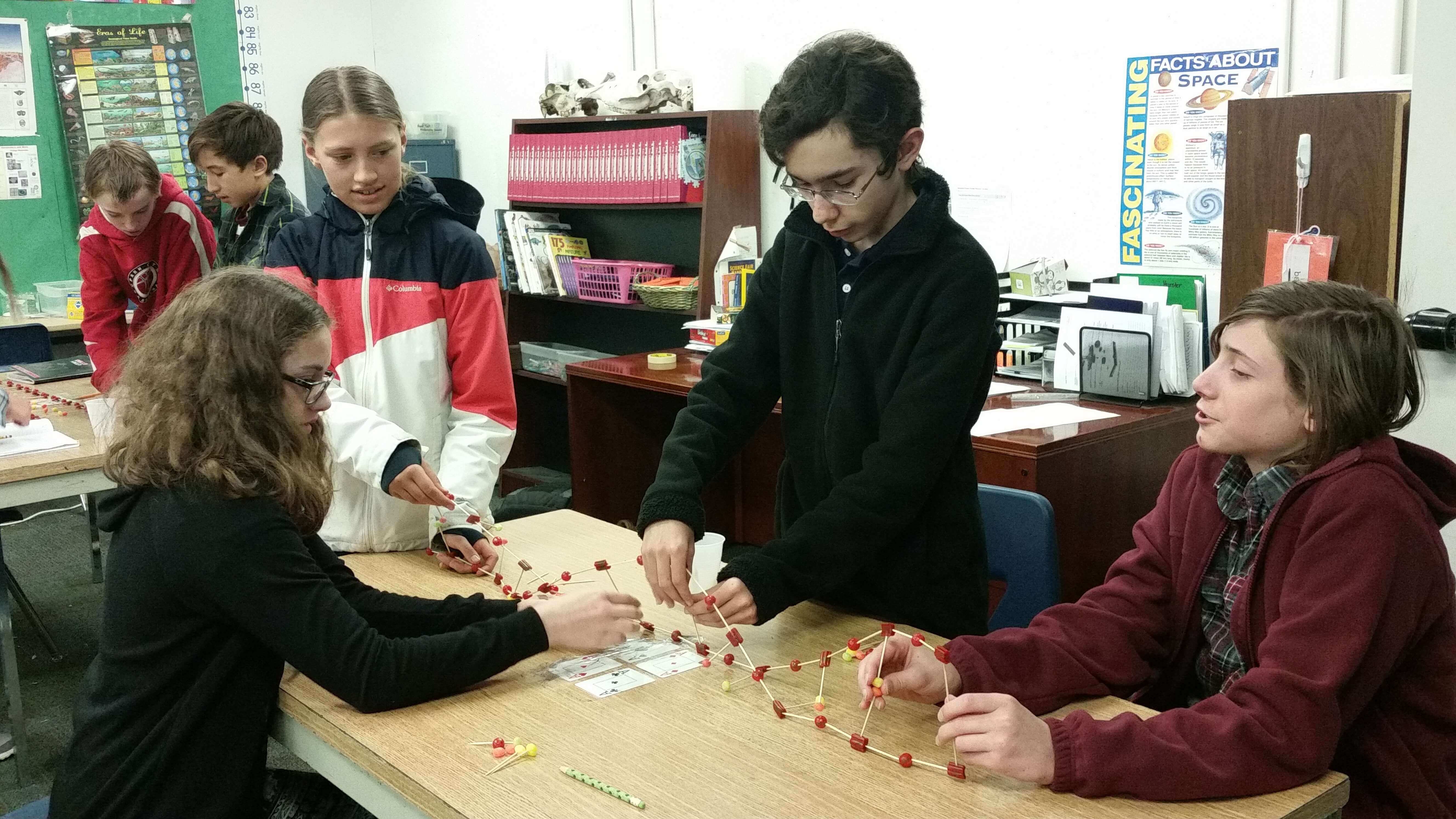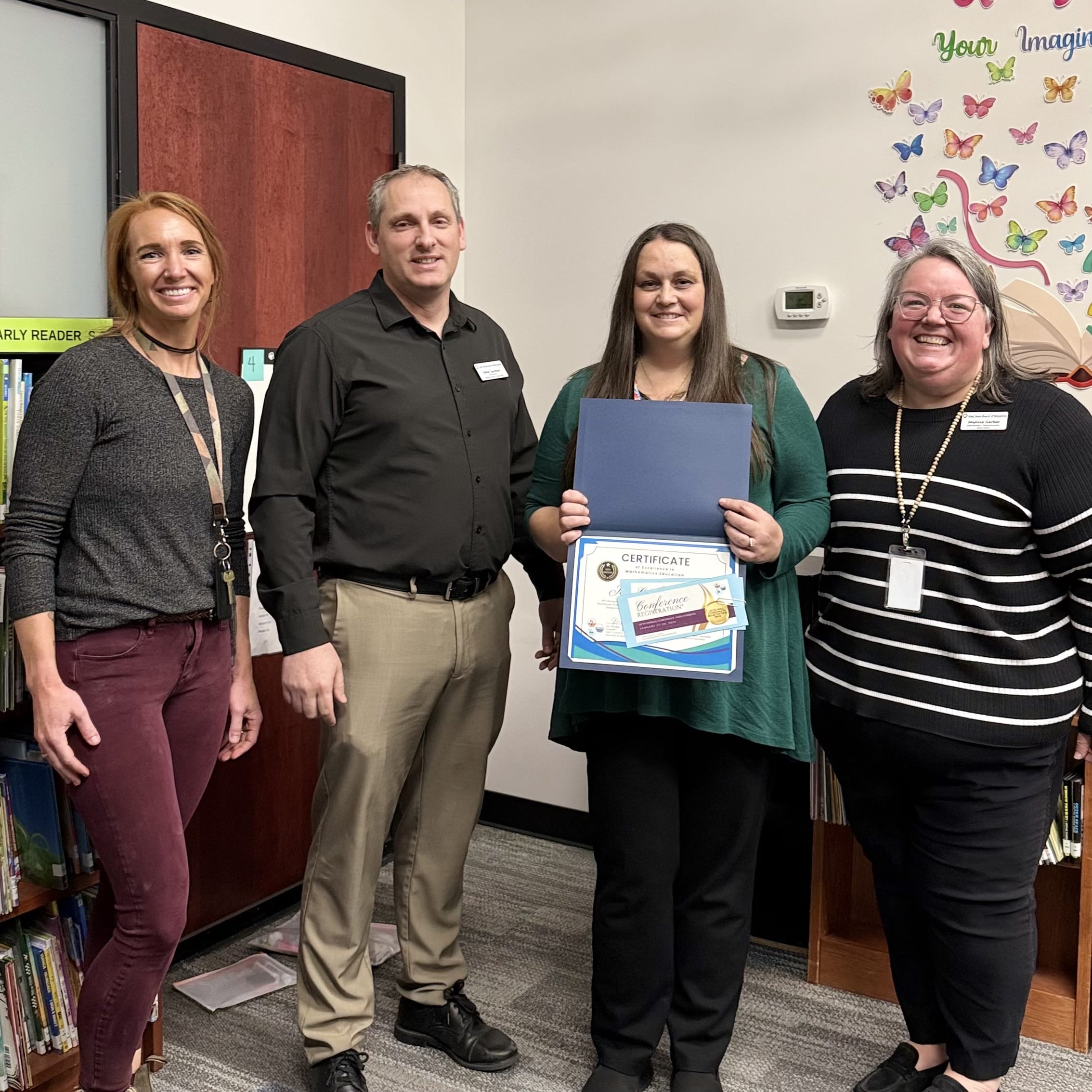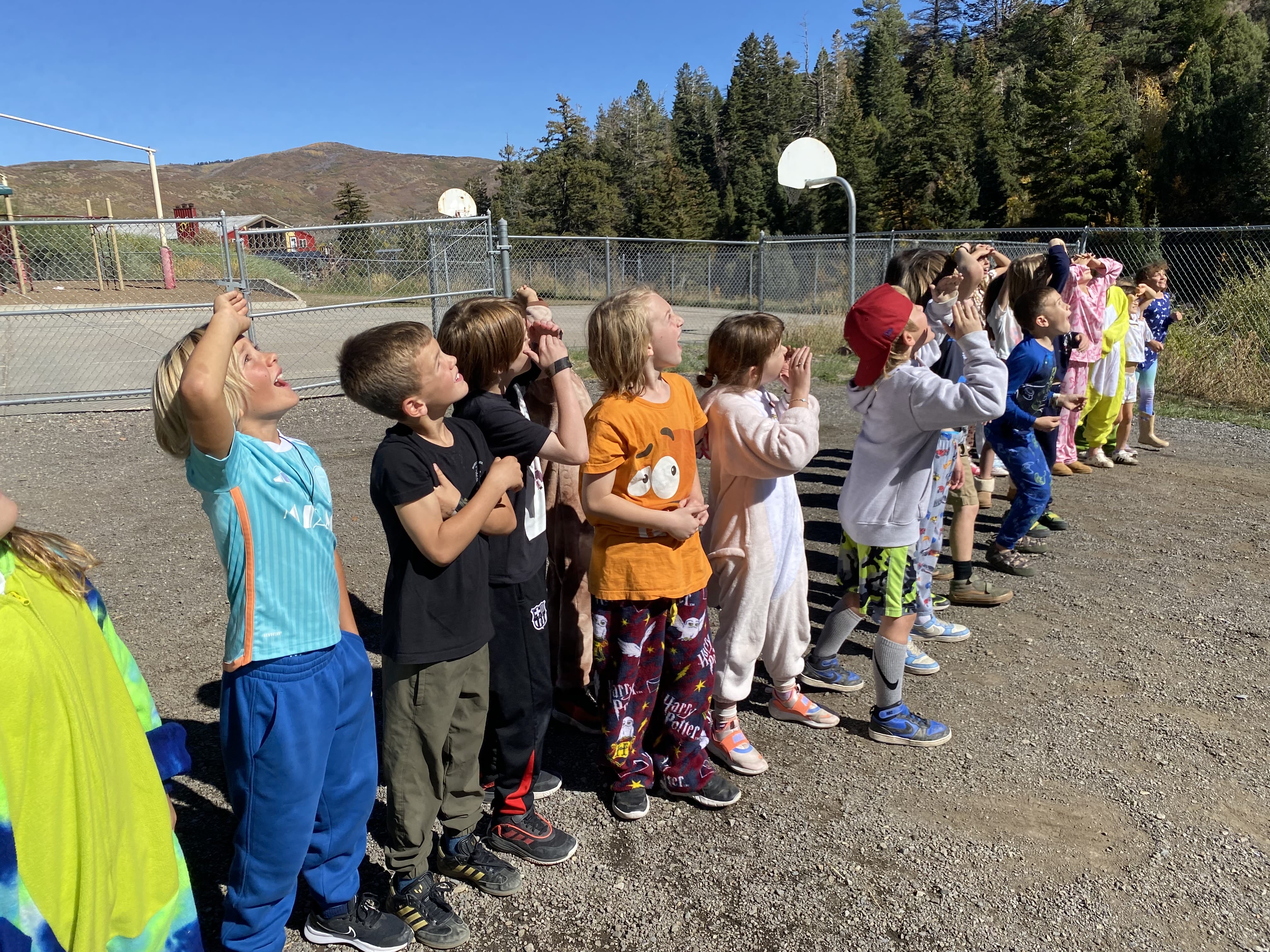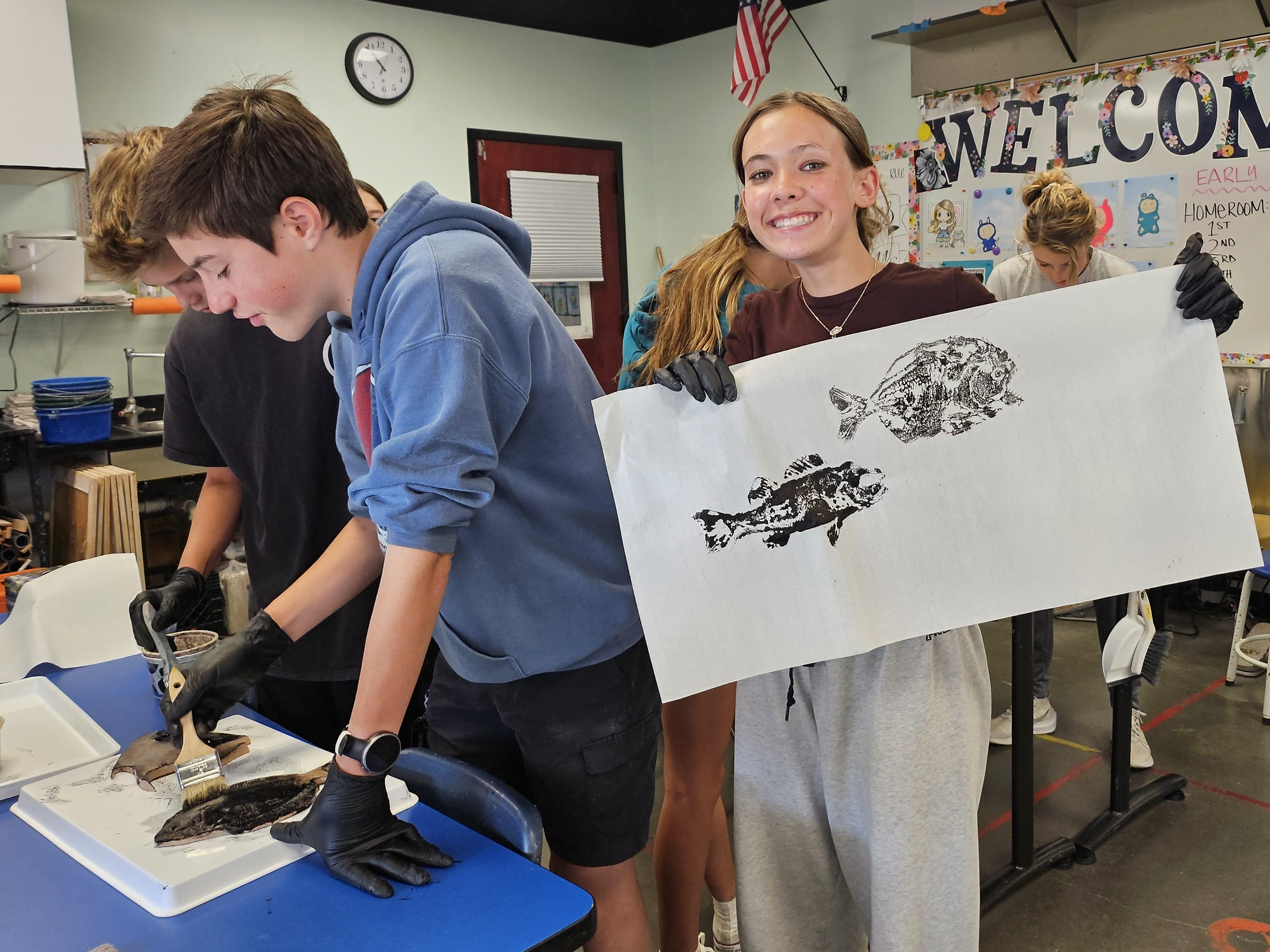Congratulations to Middle School Math Teacher, Jessica Hunsaker, who was recognized by the Utah State…
As seventh graders transitioned between their science unit on cells to their next unit on heredity and genetics, they spent a week engrossed in examining the role of DNA in the human cell. The purpose of the project was to help students better understand the complex structure of DNA and how it contributes to our genes.
Students first collected DNA samples (also known as spit) and prepared a wet-mount slide for study under the microscope. They learned that DNA is made up of a sugar and phosphate backbone combined with a base — adenine, thymine, guanine, or cytosine. Students then created their own model of a DNA molecule from soft candy and toothpicks, which they carefully twisted to simulate the double helix of a real DNA strand. With their models in hand, students were able to identify the different parts and their functions.
A fascinating component of the project was a look at mutations, which occur when DNA makes mistakes in replicating. Students were able to recognize the difference between a normal sequence and one with mutations, such as those that lead to genetic diseases and cancers. Finally, they gave their project a real-world application by examining DNA in terms of how it has contributed to the genes passed on by their own parents to make these students who they are.
April 11, 2016
